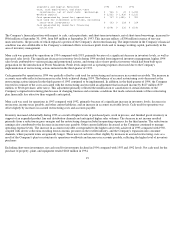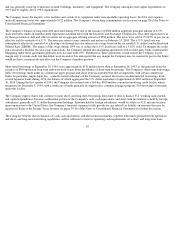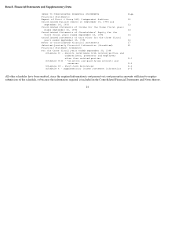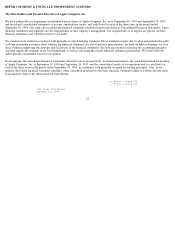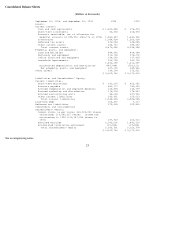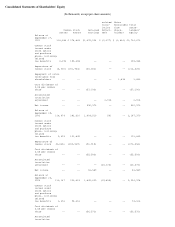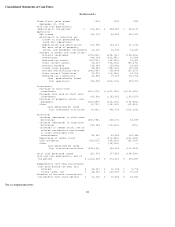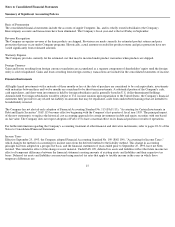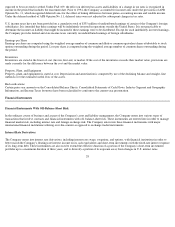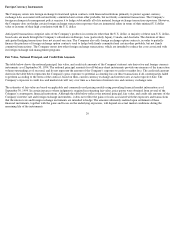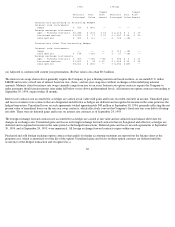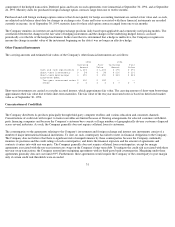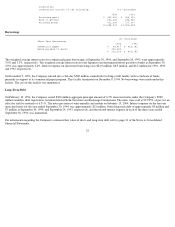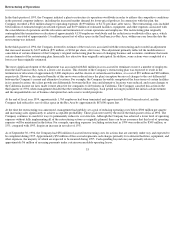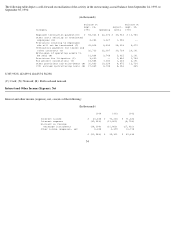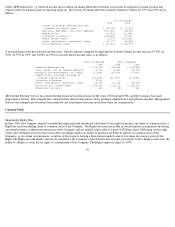Apple 1994 Annual Report Download - page 31
Download and view the complete annual report
Please find page 31 of the 1994 Apple annual report below. You can navigate through the pages in the report by either clicking on the pages listed below, or by using the keyword search tool below to find specific information within the annual report.
expected to be recovered or settled. Under FAS 109, the effect on deferred tax assets and liabilities of a change in tax rates is recognized in
income in the period that includes the enactment date. Prior to 1994, the Company accounted for income taxes under the provisions of APB
Opinion No. 11, which recognized deferred taxes for the effect of timing differences between pretax accounting income and taxable income.
Under the deferred method of APB Opinion No. 11, deferred taxes were not adjusted for subsequent changes in tax rates.
U.S. income taxes have not been provided on a cumulative total of $335 million of undistributed earnings of certain of the Company's foreign
subsidiaries. It is intended that these earnings will be indefinitely invested in operations outside the United States. It is not practicable to
determine the income tax liability that might be incurred if these earnings were to be distributed. Except for such indefinitely invested earnings,
the Company provides federal and state income taxes currently on undistributed earnings of foreign subsidiaries.
Earnings per Share
Earnings per share are computed using the weighted average number of common and dilutive common equivalent shares attributable to stock
options outstanding during the period. Loss per share is computed using the weighted average number of common shares outstanding during
the period.
Inventories
Inventories are stated at the lower of cost (first-in, first-out) or market. If the cost of the inventories exceeds their market value, provisions are
made currently for the difference between the cost and the market value.
Property, Plant, and Equipment
Property, plant, and equipment is stated at cost. Depreciation and amortization is computed by use of the declining balance and straight- line
methods over the estimated useful lives of the assets.
Reclassifications
Certain prior year amounts on the Consolidated Balance Sheets, Consolidated Statements of Cash Flows, Industry Segment and Geographic
Information, and Income Taxes footnotes have been reclassified to conform to the current year presentation.
Financial Instruments
Financial Instruments With Off-Balance-Sheet Risk
In the ordinary course of business and as part of the Company's asset and liability management, the Company enters into various types of
transactions that involve contracts and financial instruments with off- balance-sheet risk. These instruments are entered into in order to manage
financial market risk, including interest rate and foreign exchange risk. The Company enters into these financial instruments with major
international financial institutions utilizing over-the-counter as opposed to exchange traded instruments.
Interest Rate Derivatives
The Company enters into interest rate derivatives, including interest rate swaps, swaptions, and options, with financial institutions in order to
better match the Company's floating-rate interest income on its cash equivalents and short-term investments with the fixed-
rate interest expense
of its long-term debt. These instruments are also used to extend the effective duration of a portion of the Company's short-term investment
portfolio up to a maximum duration of three years, and to diversify a portion of its exposure away from changes in U.S. interest rates.
28


